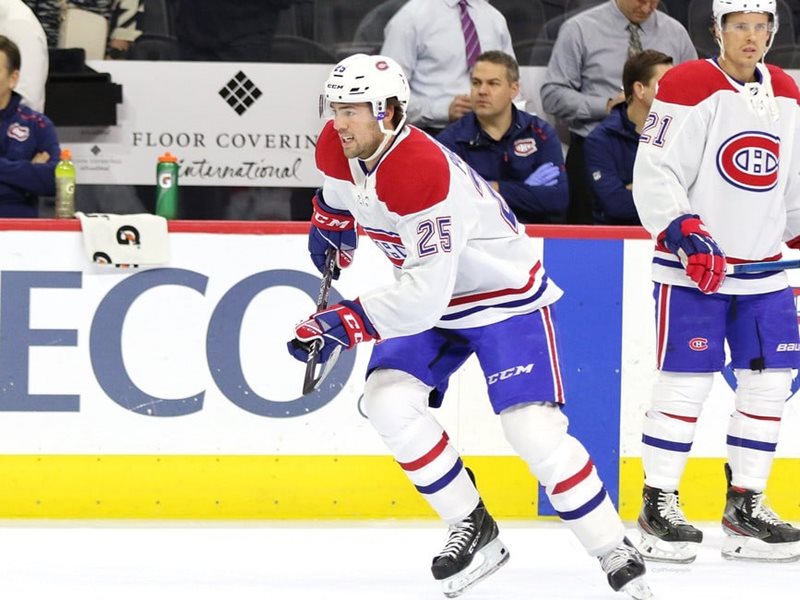
 Tony Wolak
The Hockey Writers
Tony Wolak
The Hockey Writers
45
Reads
0
Comments
Red Wings Salary Cap Snapshot
Finally, the Detroit Red Wings have cap space. After spending much of the salary cap era splurging on bloated contracts, the organization now prioritizes prospects and bargain finds when filling out their roster. The resulting cap space gives the Red Wings flexibility now and down the road.
Let’s dive into Detroit’s salary cap picture in preparation for the 2020-21 season. Just how much space do the Red Wings have to work with?
Related: Red Wings Expansion Draft Projections 2.0
Red Wings’ 2020-21 Salary Cap Commitments
Heading into the 2020-21 season, the Red Wings have $45,364,999 committed to 13 players: seven forwards, five defensemen, and one goalie. This includes Henrik Zetterberg’s $6,083,333 cap hit, but more on that later.
Dylan Larkin has the largest cap hit of the bunch, taking up $6.1 million in cap space. Detroit’s next captain will only make $4.75 million next season, but has a higher cap hit due to how his total salary averages out over the course of his contract.

The 13 players noted above do not account for prospects who will could crack Detroit’s roster next season. Filip Zadina, Michael Rasmussen, Dennis Cholowski, and Moritz Seider are strong candidates to make the Red Wings; their entry-level contracts will have a minimal impact on the overall salary cap. Evgeny Svechnikov is also expected to join the Red Wings next season after agreeing to a one-year extension.
In addition, the Red Wings have $1,666,667 in dead cap space as a result of the Stephen Weiss buyout. This is the final year that Weiss will factor into Detroit’s salary cap picture. Detroit may have to pay $290,000 in performance bonuses as well, according to CapFriendly.
Detroit’s Pending Free Agents
Steve Yzerman’s negotiating skills will certainly be tested this offseason, as the Red Wings have 11 players scheduled to become restricted free agents (RFAs). Anthony Mantha, Tyler Bertuzzi, and Robby Fabbri are the most prominent names in need of a new contract. In my offseason blueprint, I projected six-year deals for Mantha and Bertuzzi and a two-year pact for Fabbri. Regardless, these three forwards will likely see significant raises from their respective 2019-20 salaries.

None of Detroit’s other eight RFAs are expected to receive huge pay bumps. In fact, a few could be non-tendered, meaning the Red Wings can cut ties with them altogether. Adam Erne and Brendan Perlini are names to watch here.
Related: Red Wings News & Rumors: Prospects, Fabbri & More
The Red Wings also have five players who will become unrestricted free agents (UFAs): Trevor Daley, Jonathan Ericsson, Sam Gagner, Cody Goloubef, and Jimmy Howard. None of the five pending UFAs are expected to return to the Red Wings.
Cap Space & Needs
Depending on which players make the Red Wings, the organization will have around $15.5 million in cap space heading into the new season. They’ll need a goalie to pair with Jonathan Bernier, so the amount spent there would need to be deducted from the initial projected cap space.

In addition to a goalie, the Red Wings could also use a middle-six winger and possibly a top-four defenseman. The organization could acquire these players via free agency or trade, with the latter option looking particularly attractive with a flat salary cap on the horizon and teams in desperate need of cap space.
The Red Wings could also bank cap space for later, using accumulated space to their advantage around the trade deadline. If they get close to the salary cap upper limit, Detroit could also place Zetterberg on long-term injured reserve (LTIR) and get some cap relief as a result. The exact amount of added cap space depends on Detroit’s total cap commitments when they move Zetterberg to LTIR.
Related: The Grind Line: Red Wings’ Top Free Agent Targets
Final Word
As the Red Wings continue to rebuild, they’re projected to have quite a bit of cap space next season. Cap space can be considered an asset, and the Red Wings should be strategic with how they use it.
Looking at the players that make up Detroit’s roster, there are only a few negative-value contracts that stand out. This is a huge difference from just a couple of years ago when the Red Wings had one of the highest payrolls in the league, but were one of the worst from a performance standpoint. Overall, the organization is in good shape from a salary cap perspective.
Salary Cap data courtesy of CapFriendly.
The post Red Wings Salary Cap Snapshot appeared first on The Hockey Writers.
Popular Articles

















































 Blackhawks Chicago
Blackhawks Chicago Panthers Florida
Panthers Florida Penguins Pittsburgh
Penguins Pittsburgh Rangers New York
Rangers New York Avalanche Colorado
Avalanche Colorado Kings Los Angeles
Kings Los Angeles Maple Leafs Toronto
Maple Leafs Toronto Bruins Boston
Bruins Boston Capitals Washington
Capitals Washington Flames Calgary
Flames Calgary Oilers Edmonton
Oilers Edmonton Golden Knights Vegas
Golden Knights Vegas Senators Ottawa
Senators Ottawa Lightning Tampa Bay
Lightning Tampa Bay Flyers Philadelphia
Flyers Philadelphia Islanders New York
Islanders New York Sabres Buffalo
Sabres Buffalo Red Wings Detroit
Red Wings Detroit Devils New Jersey
Devils New Jersey Hurricanes Carolina
Hurricanes Carolina Blue Jackets Columbus
Blue Jackets Columbus Predators Nashville
Predators Nashville Wild Minnesota
Wild Minnesota Blues St. Louis
Blues St. Louis Stars Dallas
Stars Dallas Jets Winnipeg
Jets Winnipeg Mammoth Utah
Mammoth Utah Sharks San Jose
Sharks San Jose Canucks Vancouver
Canucks Vancouver Ducks Anaheim
Ducks Anaheim






